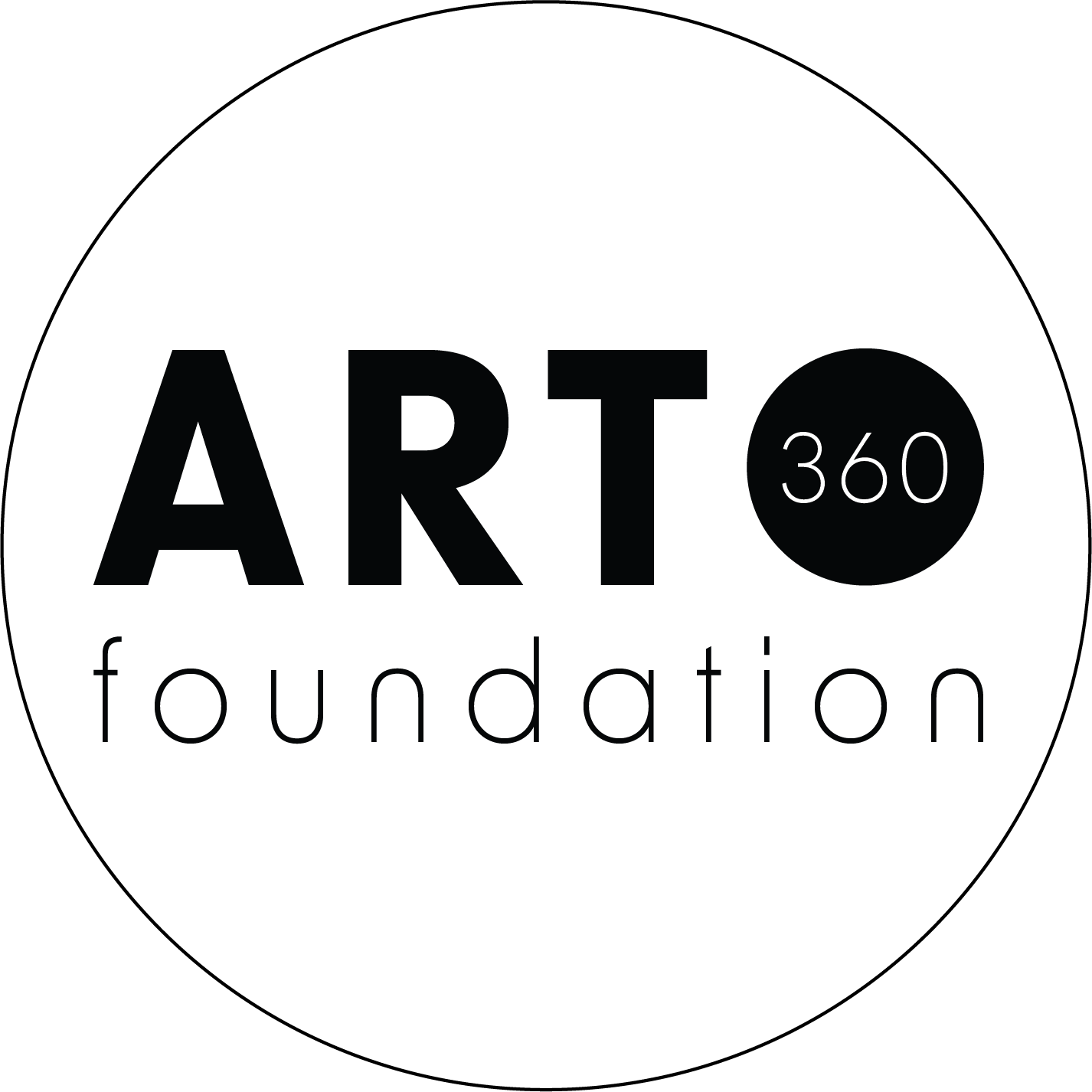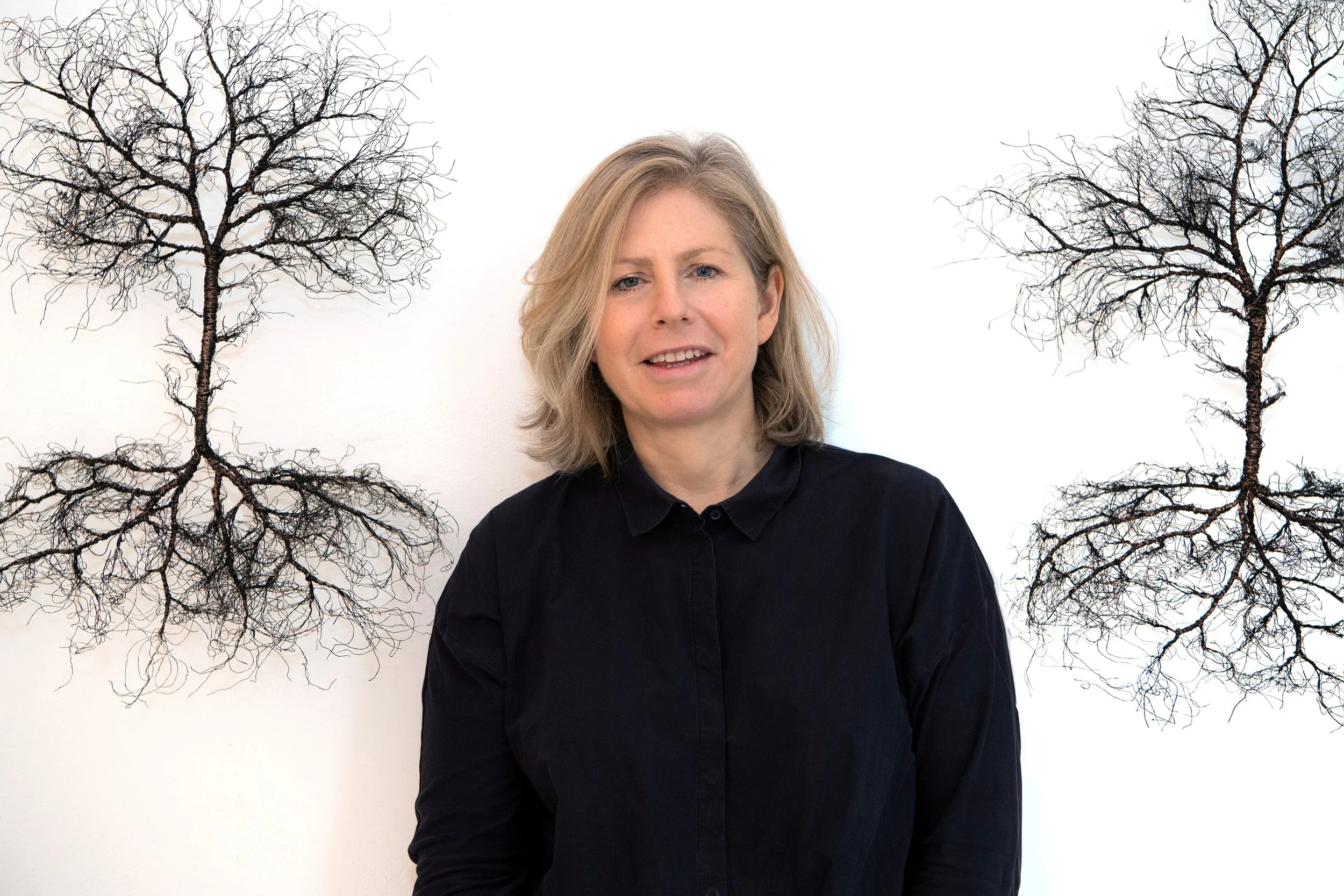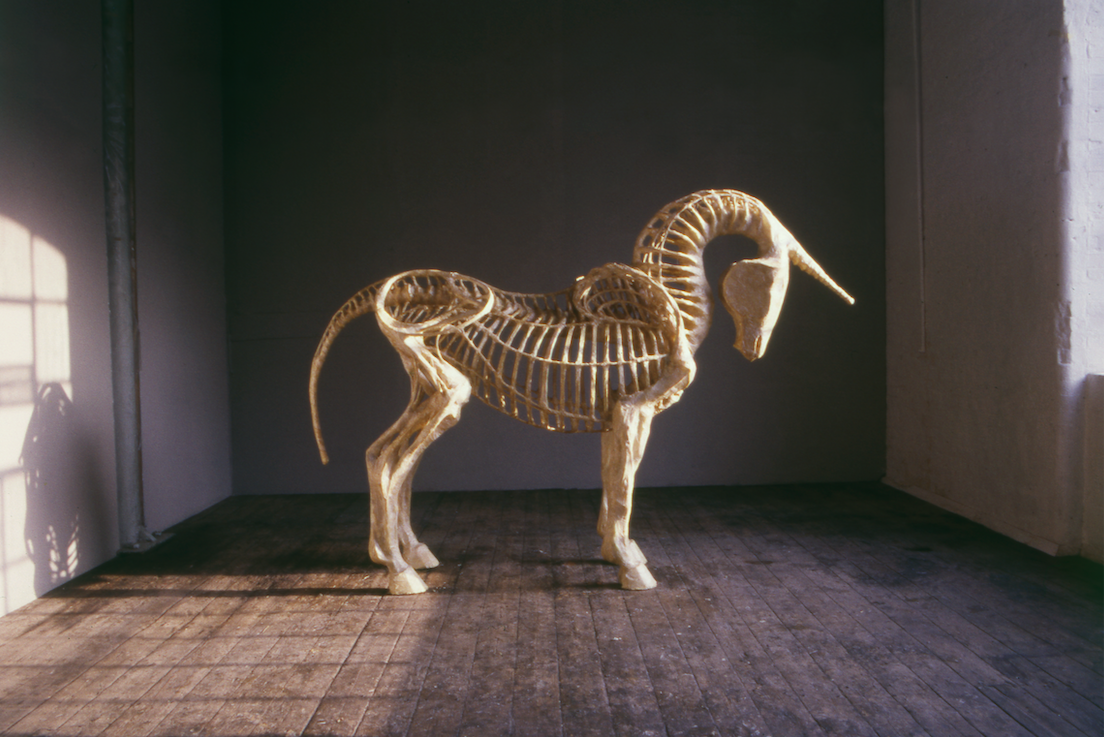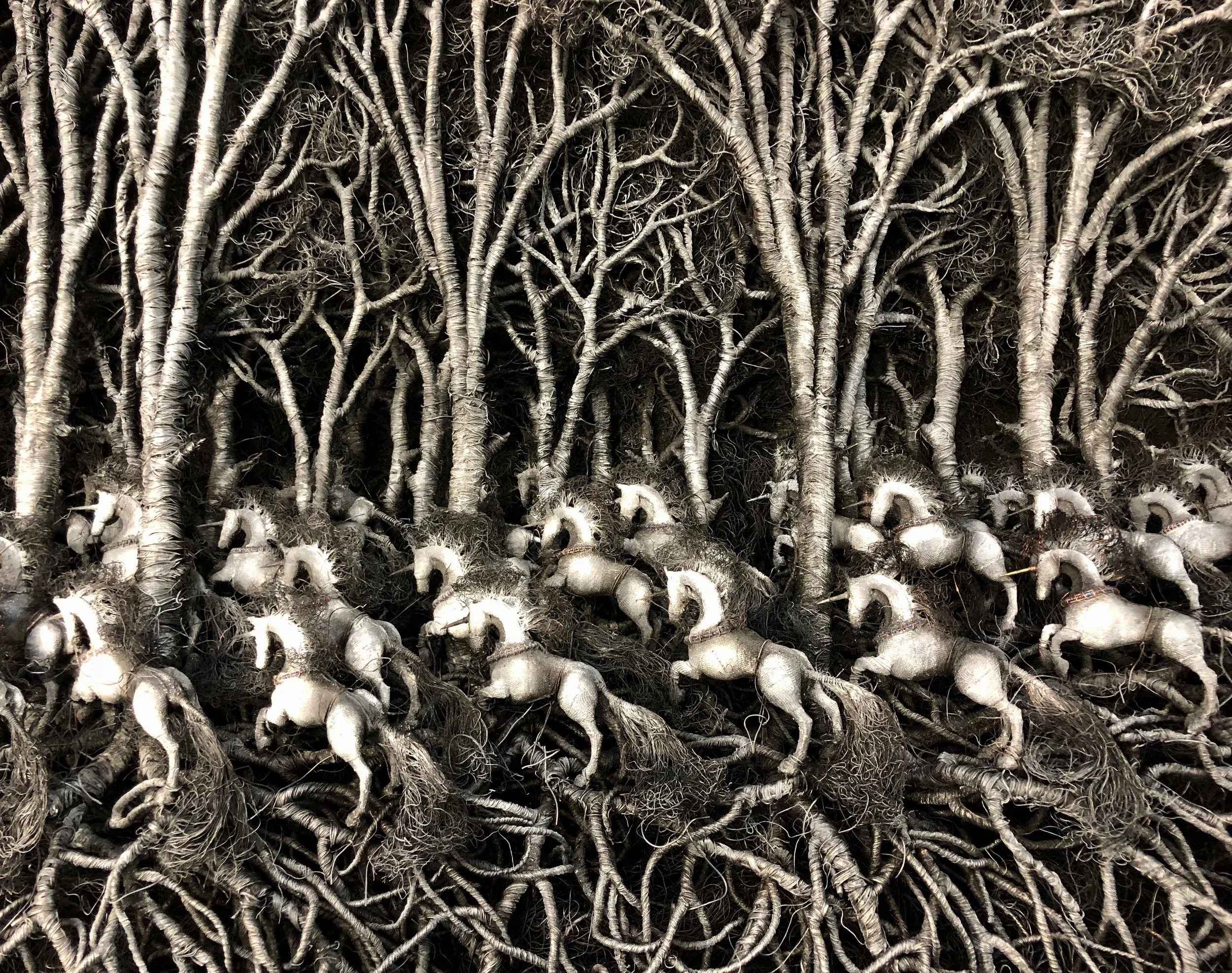Cathy de Monchaux
Portrait of Cathy de Monchaux
Cathy de Monchaux lives and works in London. She was shortlisted for the Turner prize in 1998 for her solo show at Whitechapel Gallery. Her works are held in many public collections including Tate, the Arts Council, the British Council, Contemporary Arts Society, Hirshorn (Washington), Albright Knox (New York), National Museum for Women in the Arts (Washington), Museet for Sandiskunst (Oslo), and French National and Regional Collections. Cathy has completed a large-scale public commission for Newnham College, Cambridge.
In 2010, I turned 50. I felt the need to step back from the art world and give myself some time to re-fresh my practice, experiment and think for a while, without the pressures of shows, expectations and deadlines. Six years on, my work has become more complex, intricate, slow and involved in its making. I Iike to think the new work retains the physiological intensity that my work is known for, but that I have introduced new themes for expressing it. Slowly I am starting to feel that from my self inflicted forest fire, a few fresh green shoots are coming up. - Cathy de Monchaux
Cathy de Monchaux on The Legacy of ‘Unicorn’, 1985
April 23, 2019
Every artist probably has at least one Unicorn, a huge cumbersome object or painting usually made in the first enthusiasm of youth, (mine was made in 1985), that they haul from studio to studio, an important talisman that cannot be thrown away, however demanding its stabilising requirements.
My Unicorn was shown a couple of times, but my work moved on to other things – the Unicorn stayed in its 176 cubic feet of storage space where it still waits…
In 2004 I was looking in the back of my mind for an image that would allow me to talk about conflict in my work. War, Uccello, Spears, Horses, then I remembered my Unicorn. Among other things, I am still making unicorns.
There are also the ephemeral fragments that artists keep rather than throw away at the end of making a piece, our way of telling our story back to ourselves. They are echoes of our struggles to get things right as we wrestle with drawings and matter to find equivalents to hold a mirror back to the world in a convincing way. They are often all that we have left of a piece, or they are fragments of ideas that were not used that could hold the seed for a new idea at another time.
Ephemera needs to be archived in some way, its relevance somehow marked for the poor, grieving relative in the future who will have to sift through these random bits of stuff and fluff and work out what is important.
The input of the grieving relative and how they decide to edit our “stuff” is paramount to achieving any kind of legacy for an artists’ practice. How can we expect them to understand that the ephemera is as important as the finished Unicorn if we don’t signpost it for them clearly while we are alive?
I am lucky that almost all the works I have made since that Unicorn have been exhibited and sold into collections.
The only reminder of their existence is my boxes of ephemera and a deeply shambolic image bank, which ranges from 1977 with self-printed black and white photos, going on to slides, transparencies, floppy discs, Videos, tapes, CDs and memory sticks.
Having an Art360 Award has helped me focus on sifting through the things that represent my practice. It has been particularly helpful in scanning my muddled image bank and putting in one place all my images and information about the work from ephemera, to work in progress, to finished object, to where it was shown and who has it now. It is still very much a work in progress, but I am very grateful for the help and support of Art360 in getting it started.
Credit lines:
1) Battle in Progress, 2006 © Cathy de Monchaux, All Rights Reserved.
2) Unicorn, 1985 © Cathy de Monchaux, All Rights Reserved.
3) Border Crossing, fresh finished picture, 2019 © Cathy de Monchaux, All Rights Reserved.





